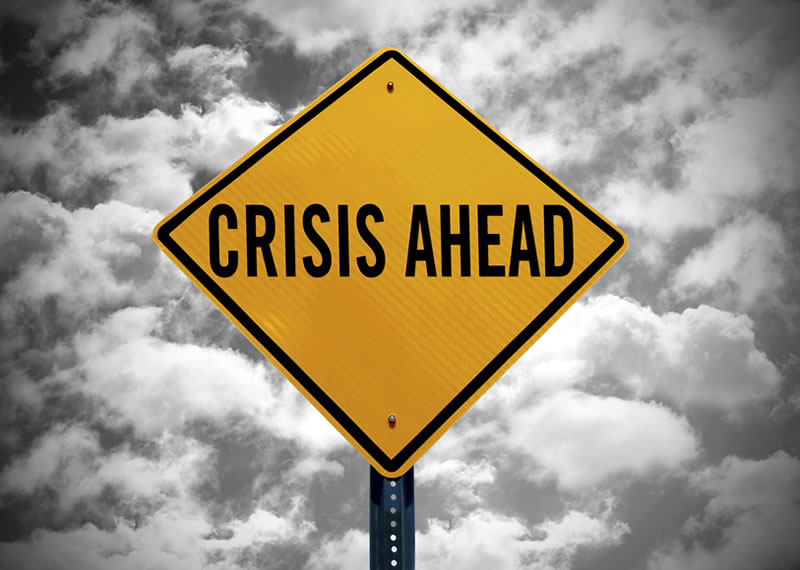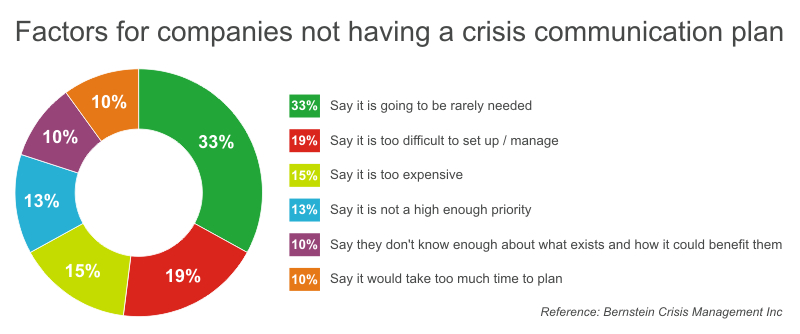Crisis Communications in Investor Relations
Crisis Communications in Investor Relations

In his 2009 paper, Corporate brand reputation and brand crisis management, Harvard Professor Stephen Greyser identifies several causes for corporate crises, among them product failure, social responsibility gaps, executive misbehavior and poor business results. With such wide-ranging potential for disaster – not including those factors totally out of a company’s control such as the death of a leader or key spokesperson – it’s clear that every organization, large or small, is susceptible to the threat of a crisis, the result of which can have a devastating effect on factors such as reputation, share price and investor interest.
When a crisis hits any company, private or public, it is a time of uncertainty and concern which makes it vital to act fast and execute a plan of action from senior management. Whether the event lasts for a few days or a prolonged period it doesn’t do away with the need to thoroughly prepare a strategy and chain of command. What is vital though is to clearly communicate with all stakeholders in as timely manner as possible, remain transparent and forthcoming with details and execute on the company’s crisis plan as fast as possible.
When devising the crisis plan, one should consider the following (amongst others) points in relation to the crisis:
- How long will the event last?
- How will the event impact your business and/or peer companies?
- How will this affect short term or long-term strategy of the business?
- How will you communicate to the shareholders and broader public?
- What are your key messages and talking points around the crisis?
- Who would be most interested in this news and how do you communicate this to them?
Crisis communications is a highly specialised area of communications and can greatly support and assist a company and its management during the fall out from a crisis. It is also vitally necessary in today’s environment where information is freely available through multiple sources such as social media along with traditional media channels. This can complicate matters for a company in terms of who is commenting on what, who is sharing (speculative or incorrect) information and adding to an already heated narrative. Companies and their management not only have to stop the crisis or given situation but also need to get out in front of the message and take charge of the narrative and key messages.
What does all of this mean for companies and their investor relations activities? In its shortest form, this means they must be ahead of the game and a crisis team should be tasked with the communication, messaging and engagement with all its stakeholders both during a crisis and afterwards. Easier said than done! There are lots of specialist crisis communications agencies and companies that can complement and assist internal resources at the firm should the necessary experience or resources be available internally. They key is to have a team that can be relied on, that know the company inside and out and is an expert in the given industry.
Scott Powell, Head of Investor Relations at VolitionRx Limited, and Adjunct Assistant Professor at Fordham University in New York City, states: “The initial instinct for companies when faced with a serious event might be to avoid conflict, to shy away from speaking with investors, and to sidestep those confrontational and emotional phone calls and emails. However, ‘getting in front’ of these adverse events, speaking with investors to address their concerns, and explaining the events which led to this unfortunate situation and what plans the company is implementing to move forward, may actually allow companies to keep much of their shareholder base intact. This is because these actions may allow investors to better understand the situation and to believe that management has the integrity and competency to address and openly discuss the issue at hand.”
Where to start in crisis communications? As in most things in life, it’s in the finer details and the execution that makes all the difference. Have each department within the company draw up a strategic plan covering the most likely scenarios and which department/ person is responsible for what is a good place to start. Allocate responsibility, action plans, budgets and resources accordingly. Nominate and train one key company spokesperson and make sure everyone is aware that all statements are to go through them and give pre-approved holding statements to other areas of the business for issuance. Along with this it is necessary to identify and know the relevant stakeholders you will be communicating with – how to reach them, the tone of the language and the type of issues they will be most interested in hearing about.
Also, it’s vital to have in place a sign off process for quick turnaround of updated messages and decisions. Depending on the size of the organization, it could be beneficial to have a crisis committee comprised of various people within the organisation and its departments to execute specific events and be briefed on up to the minute information for quick dissemination to their teams or departments. Post crisis analysis is vital in order to ascertain what was effective, what could be done better next time and what might be done differently in the future. There is tremendous value in this type of analysis and reflection in order to build a stronger and more effective crisis communication plan for the future.
From an investor relations perspective, this means relevant stakeholders want management to respond quickly and transparently in both internal and external crisis situations. This means that a company must continuously put at the forefront risk management and business continuity planning measures. Management needs to show trust, their responsiveness to the events and have full accountability for their actions, or lack thereof. The phone will undoubtedly ring off the hook so it is important to field as many calls or emails as possible with the public and investors during this time and if time doesn’t allow then at a minimum acknowledge the receipt and then get back to them at a later date.
Let’s take a look at the numbers and finding on crisis communications to put things into perspective.
- 59% of business decision makers have experienced a crisis in their company or previous company.
- 79% of business leaders believe they are only 12 months away from a potential crisis event.
- Only 54% of companies have a developed crisis plan in place.
- Indifference and cost are the key barriers to developing a plan.
- Social media puts increasing pressure on companies today. 65% of respondents feel that social media makes it more difficult to manage a crisis but on the flipside, after a crisis 55% believe that social media will make it easier to recover.
- 10 audiences (that aren’t the media) to target during a crisis include corporate executives, employees, Board of Directors, customers, vendors, industry analysts, financial institutes, trade associations, regulators and investors.

Who can forget the recent corporate crisis and public relations blunders made and the subsequent fallout from crises at Volkswagen, UBER and most recently Equifax and the Weinstein debacle? These are all examples where the protagonist didn’t come off so well. However, cases like Johnson and Johnson/ Tylenol case in 1982 and the Odwalla e Coli apple juice case show that in the face of difficulty a company can turn an outcome to have a positive outcome. One can see that what is imperative in all the aforementioned cases is necessary to admit fault where fault has occurred, be completely transparent in findings and course of action and have timely a response and actions.
Previously in my career I worked for a telecoms provider located in regions known for political instability and devastating weather occurrences. I witnessed firsthand the importance of not only having a comprehensive crisis and business continuity plan, but also one that communicates effectively during and after a crisis to multiple audiences including the capital market, the business’ customers, government and the general public. A constant flow of timely information and actions to all these stakeholder groups is what is important during these times. Staff at all levels need to be part of the process and know which people make up crisis teams and steering committees so as for quick point of reference should the need arise. There is no one size fits all crisis communication plan for companies, but what is important is to have one. As we can see from the statistics above, a business crisis is almost inevitable at some point in the life of a company and being prepared is your best change of survival in upholding the image, trust and reputation of the business and its management.
Sources:
Elite Connect
IR Magazine
Stephen Greyser
Business Insider
Bernstein Crisis Management/ ODM Group crisis report
